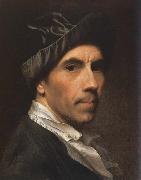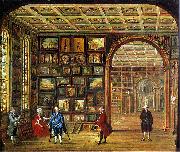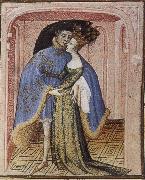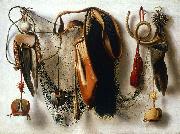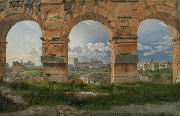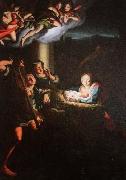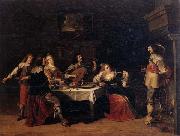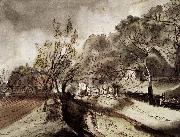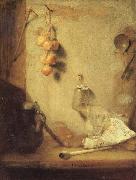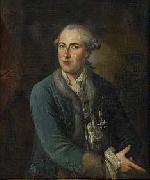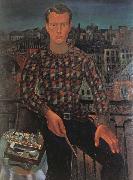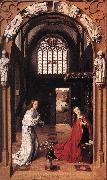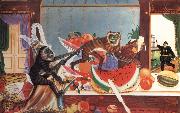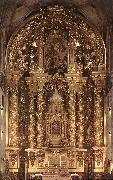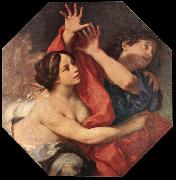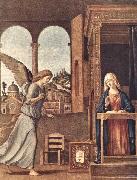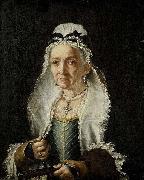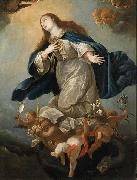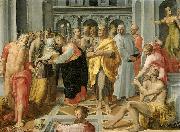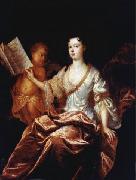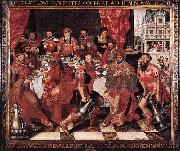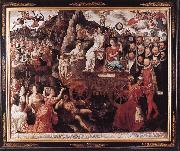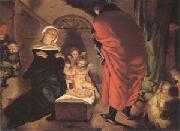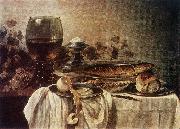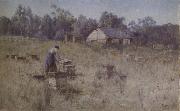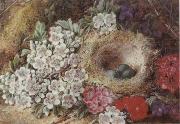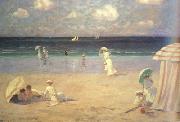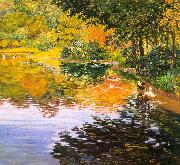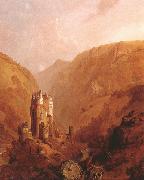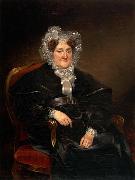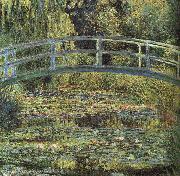|
|
|
|
|
|
|
|
|
|
|
|
|
|
|
|
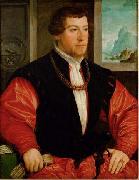 |
Christoph Amberger
|
|
(c. 1505 --1562) was a painter of Nernberg in the 16th century, a disciple of Hans Holbein, his principal work being the history of Joseph in twelve pictures.
Amberger travelled to Northern Italy and Venice between 1525 and 1527. He died in Augsburg.
|
|
|
|
|
|
|
|
|
|
|
|
|
|
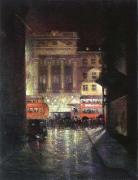 |
christopher r.w.nevinson
|
|
christopher r.w.nevinson(1889 to 1946)English painter. Son of H. W. Nevinson, the war correspondent and author, he studied painting at St John's Wood, London, in 1908, although his formative years as a student were spent at the Slade School of Art (1909-12) in London. He was influenced by Impressionism and Post-Impressionism, as well as Sandro Botticelli, as seen from an early Self-portrait (1911; London, Tate). The Futurist Exhibition of March 1912, held at the Sackville Gallery, London, proved decisive for his development. He met Gino Severini and returned with him to Paris where he encountered Umberto Boccioni, Ardengo Soffici, Guillaume Apollinaire and Amedeo Modigliani. He continued his studies at the Acad?mie Julian and the Cercle Russe in Paris, announcing his affiliation with Futurism by exhibiting a painting called Rising City (1912; lost) in the Friday Club exhibition of January 1913. Its title was a homage to Boccioni's painting, City Rises (1910; New York, MOMA), which had been shown at the Futurist Exhibition.
|
|
|
|
|
|
|
|
|
|
|
|
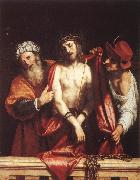 |
CIGOLI
|
|
Italian Baroque Era Painter, 1559-1613 |
|
|
|
 |
Cimabue
|
|
Italian
b1240
d1302
Cimabue Location
|
|
|
|
|
|
|
|
|
|
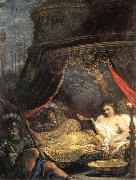 |
Ciro Ferri
|
|
Italian Baroque Era Painter and Sculptor , ca.1634-1689 |
|
|
|
|
|
|
|
|
|
|
|
|
|
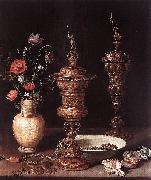 |
Clara Peeters
|
|
Clara Peeters (1594 - c. 1657) was a Flemish painter noted for painting still lifes, particularly of breakfast scenes and florals.
Few details of her life are known. She was baptized in Antwerp in 1594, and married there in 1639. She is known to have lived in Amsterdam and The Hague. Her first known work was dated 1608, when she was 14. The quality of this work reveals a master teacher, and scholars believe she was influenced by Osias Beert. He was probably also an influence on the flower paintings of her contemporary, Catarina Ykens I (1608/1618 - 1666/1685), who was the wife of Frans Ykens, a pupil of Beert's. Clara Peeters's last painting was dated 1657, and is now lost. The circumstances of her death are unknown.
|
|
|
|
|
|
|
|
|
|
|
|
|
|
 |
Claude Deruet
|
|
(1588-1660) was a famous French Baroque painter of the 17th century, from the city of Nancy.
Deruet was an apprentice to Jacques Bellange, the official court painter to Charles III, Duke of Lorraine. He was in Rome between ca. 1612 and 1619, where - according to Andre Felibien - he studied with the painter and etcher Antonio Tempesta. During his stay in Rome, he painted the Japanese samurai Hasekura Tsunenaga on a visit to Europe in 1615.
Deruet was made a noble by the Duke of Lorraine in 1621, and was then made a Knight of the Order of St Michel in 1645 by Louis XIII, who had in 1641 absorbed most of Lorraine into France. He had a luxurious residence in Nancy, named La Romaine, where Louis XIII and his Queen stayed in 1633.
Claude Lorrain was an apprentice to Claude Deruet in 1623 for one year. He also married and had two sons, one of whom became a painter.
|
|
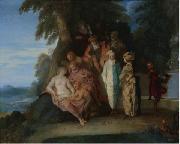 |
Claude Gillot
|
|
(April 28,1673 Langres - May 4,1722 Paris) was a French painter, best known as the master of Watteau and Lancret. He had Watteau as an apprentice between 1703 and 1708.
He was a painter, engraver, book illustrator, metal worker, and designer for the theater.
His sportive mythological landscape pieces, with such titles as Feast of Pan and Feast of Bacchus, opened the Academy of Painting at Paris to him in 1715; and he then adapted his art to the fashionable tastes of the day, and introduced the decorative fetes champetres, in which he was afterwards surpassed by his pupils. He was also closely connected with the opera and theatre as a designer of scenery and costumes.
|
|
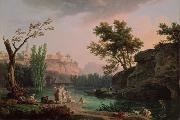 |
Claude Joseph Vernet
|
|
Claude-Joseph Vernet (14 August 1714 - 3 December 1789) was a French painter. His son, Antoine Charles Horace Vernet, was also a painter.
Vernet was born in Avignon. When only fourteen years of age he aided his father, Antoine Vernet (1689-1753),[1] a skilled decorative painter, in the most important parts of his work. The panels of sedan chairs, however, could not satisfy his ambition, and Vernet started for Rome. The sight of the sea at Marseilles and his voyage thence to Civitavecchia (Papal States' main port on the Tyrrhenian Sea) made a deep impression on him, and immediately after his arrival he entered the studio of a marine painter, Bernardino Fergioni.
Slowly Vernet attracted notice in the artistic milieu of Rome. With a certain conventionality in design, proper to his day, he allied the results of constant and honest observation of natural effects of atmosphere, which he rendered with unusual pictorial art. Perhaps no painter of landscapes or sea-pieces has ever made the human figure so completely a part of the scene depicted or so important a factor in his design. In this respect he was heavily influenced by Giovanni Paolo Panini, whom he probably met and worked with in Rome. Vernet's work draws on natural themes, but in a way that is neither sentimental or emotive. The overall effect of his style is wholly decorative.[2] "Others may know better", he said, with just pride, "how to paint the sky, the earth, the ocean; no one knows better than I how to paint a picture". His style remained relatively static throughout his life. His works' attentiveness to atmospheric effects is combined with a sense of harmony that is reminiscent of Claude Lorrain. |
|
|
|
 |
claude lorraine
|
|
Claude Lorrain (also Claude Gell??e or Le Lorrain) (Lorraine, c. 1600 ?C Rome, 21 or 23 November 1682) was an artist of the neo-classical era who was active in Italy, and is admired for his achievements in landscape painting. |
|
|
|
|
|
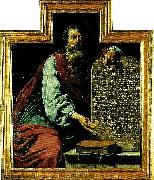 |
claude vignon
|
|
Claude Vignon (19 May 1593 - 10 May 1670) was a leading French painter and engraver working in the Baroque manner.
He was born at Tours and received early training in Paris. About 1610 he travelled to Rome where his mature style was formed in the circle of French painters there that included Simon Vouet and Valentin de Boulogne, a prominent member of the Caravaggisti working, like Bartolomeo Manfredi, in the manner established by Caravaggio.
He returned from Italy, after a tour in Spain, in 1623. His paintings are represented in most of the major museums. |
|
|
|







